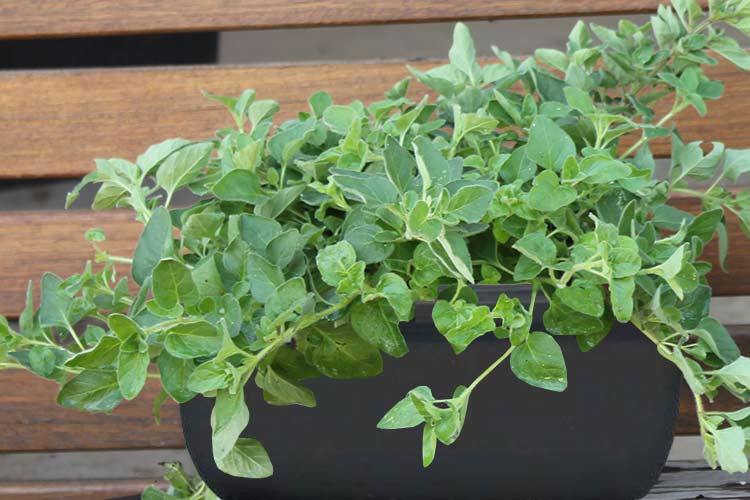Growing herbs in pots is a great way for everyone, but even people without access to garden space, to grow a plant. Even better, by growing a herb, you can grow something edible and contribute additional flavour to your cooking.
Herbs in pots can be as easy as sitting a store bought pot of fresh herbs on the windowsill for a short time. For a larger potted herb collection or for a more ornamental display choosing the right pot can contribute to better plant growth and be very visually appealing.
Pots should be selected to suit your space and your garden design. Herbs can be grown in most containers, but some consideration to your situation is a good idea. Pots need to be not just aesthetically pleasing to you, but also suit the size and growth habits of your plants, and if you wish to eat your herbs, they also need to be safe and free from contamination.
Recycled pots and tins can look very rustic and this rustic look is popular for growing herbs. You will need to ensure they have adequate drainage. Metal containers should be used where there is some shelter from the sun as the sun can heat the metal and burn the plant roots.
Care should also be given to ensuring your containers are “food safe”. Ensure your recycled container has not been previously used to hold anything toxic which may have left residue, or is not made of aluminium or other substance which could leach heavy metals or other toxins into the soil and therefore into your herbs. This may include containers once used to hold toxic substances but may also include aluminium pots and cans, recycled timber which has been treated previously or even car tyres, including ornamental planters made from recycled tyres.
If you are not sure about the “food safety” of your recycled container, wash it well with soapy water before use and then pot the herb into a plastic pot which can sit inside your rustic recycled container.
Terracotta pots look very beautiful with herbs in them. Terracotta is porous and will dry out very quickly. In humid areas this will be of benefit if growing herbs like sage or thyme which are less humidity tolerant, but it can be too dry for basil and parsley which are less tolerant of dry soil. Terracotta pots will dry out much faster if located in sunny or windy positions, so might be best located in sheltered positions, whilst still allowing enough sunlight for good plant growth. Terracotta can be painted inside to reduce the evaporation from the pot, but if this is then to be used for growing edible plants, ensure the product you paint the pot with is food safe.
Glazed pots can be highly ornamental but often have inadequate drainage for herbs. Check that your pot has more than one hole in the base as most herbs detest being waterlogged. Drill additional holes if you can or place a 5cm layer of course gravel on the bottom of the pot to improve drainage. Mint is the exception, and it will be quite happy in a poorly drained pot, although it will not be happy in a pot with no drainage at all.
Plastic pots are often the most functional but least attractive choice for a potted garden. By placing the plant into a plastic pot, then placing the plastic pot inside a terracotta, glazed or other ornamental pot the plants can enjoy the best of both options. The potted garden will be highly ornamental, the pots will be easily able to be removed for re potting as needed, and the plants will have good drainage and shelter from the sun heating the pot and the root zone excessively.
The size of the pot will also be an important consideration when growing herbs. The more root space the plant has, the larger it is able to grow and therefore the more productive it can be.
Larger growing herbs such as rosemary, chillis or even lemongrass will do well if grown in a large pot. A pot which is at least 30cm deep will assist all herbs to have enough root depth to do well and grow into full sized plants.
Many herbs do not need a lot of space and can be planted into the same large pot or planter. Lemongrass and mint are best in their own pots.
Potted herbs should be positioned where they get approximately 6 hours sun per day with protection from the harsh western sun if possible in warmer regions. Exposed balconies can dry out quickly and herbs grown here will need additional watering.
Warm courtyards with a north facing wall can be ideal for growing herbs in areas that have cold winters.
Most importantly potted herbs should be placed where they are easily accessible to the kitchen for ease of harvesting as needed. If the pots are close by they will also be easy to keep an eye on and water as needed. Pots of herbs on the kitchen windowsill, by the back door or in the outdoor entertaining area can be readily enjoyed, which is after all the main reason for having them!
*Article published by Kate Wall






